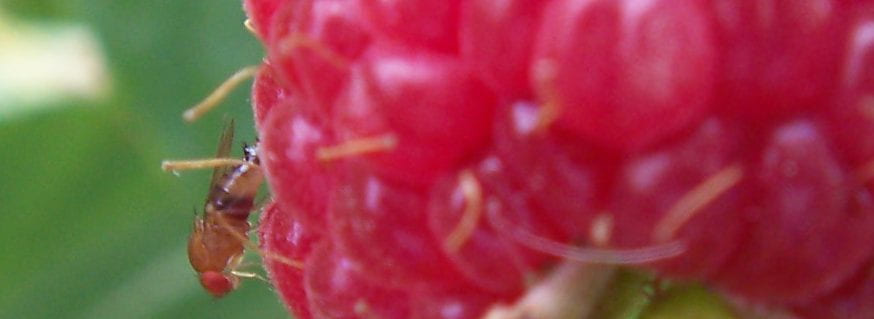We're moving! Beginning with the 2024 growing season, we're introducing a new blog, the NY Berry Pest Monitoring Blog.
To keep receiving SWD and other berry pest updates, you need to subscribe and confirm your email! To subscribe to the new blog, visit the website link and click on 'Subscribe by Email' on the right hand menu. Next, check your email. You will receive a confirmation email, and you'll need to click the link to confirm.
Why the change?
There are a few reasons for the change. First, this new blog will allow us to include other berry pests in our monitoring and reporting efforts across the state, including Cranberry Fruitworm (CBFW), Cherry Fruitworm (CFW), and Blueberry Maggot (BBM). These three pests were ranked highest for other problematic insect pests on your farms from poll responses of growers in winter 2023-24 conducted at regional winter meetings and on the SWD blog. They have the potential to cause significant damage to berry crops, primarily blueberry. They can each be monitored using a unique trap with a pheromone or scented lure to attract the target insect. Monitoring can be used to detect pest activity in specific locations and identify the best windows for management. Rose chafers also ranked highly. However, the traps for this pest can often draw more insects to the monitoring location, so we are not including this in our current efforts.
Survey Responses: What other insects are problematic on your farm?
Responses from berry growers in winter 2023-2024. Surveys were conducted at regional winter meetings and on the SWD blog.
| Weighted Value | Pest | Rank |
| 18.2 | Cranberry Fruitworm | 1 |
| 16.9 | Rose Chafers | 2 |
| 16.0 | Cherry Fruitworm | 3 |
| 13.8 | Blueberry Maggot | 4 |
| 12.1 | Mites | 5 |
| 9.4 | Aphids | 6 |
| 8.9 | Leafhoppers | 7 |
| 7.4 | Japanese Beetles | 8 |
| 6.2 | Sap Beetles | 9 |
| 3.9 | Other - gall wasps | 10 |
We are also now able to report regionally, rather than just at a county level. Nature rarely pays attention to boundaries like county lines. To account for more specific regional microclimates, we will reporting trap captures at a more local level. The new system will use a new dynamic map (on the homepage of the new blog), which is searchable by region, specific location, date, and time frame. We recognize the importance of protecting privacy, therefore GPS coordinates used in reporting will be truncated to be approximate.

The blog will also give us more flexibility, enabling us to manage information more efficiently. While data management behind the scenes should be (mostly) invisible, a more streamlined approach will help us serve the industry more effectively.
Over the the 2024 season, we will do our best to report information in both locations to avoid any missed coverage. But the most up-to-date information will be on the NEW Berry Pest Monitoring Blog. We're also working to migrate information to the new blog and connect data collected in 2024 and future seasons with the database used in previous seasons, so that we have a uniform, comprehensive set of data.
Thank you for your patience in this transition! Please visit the NY Berry Pest Monitoring Blog to subscribe and receive seasonal updates!
Any comments or feedback, please send to Anna Wallis at aew232@cornell.edu.
Thank you to everyone that has contributed to developing the new blog, monitoring and reporting system, and who continues to support berry pest management across the state and beyond!

